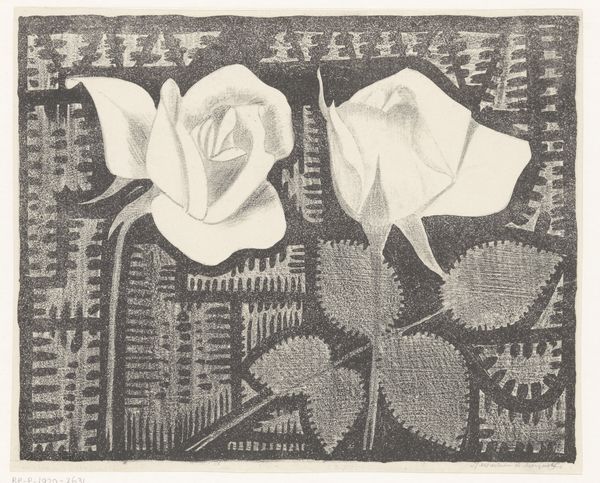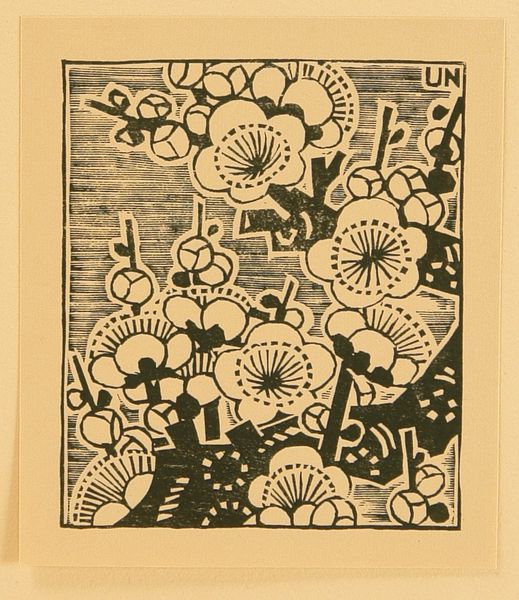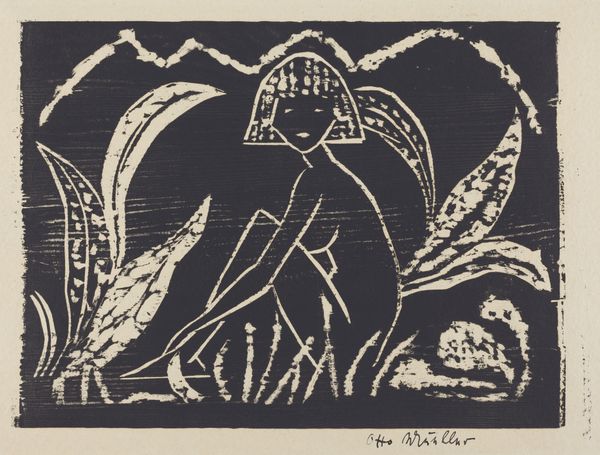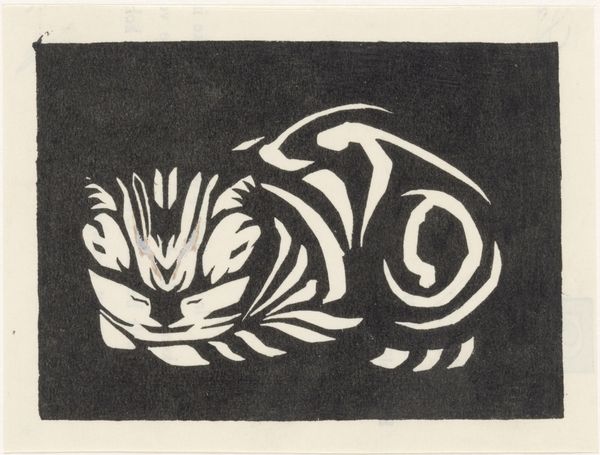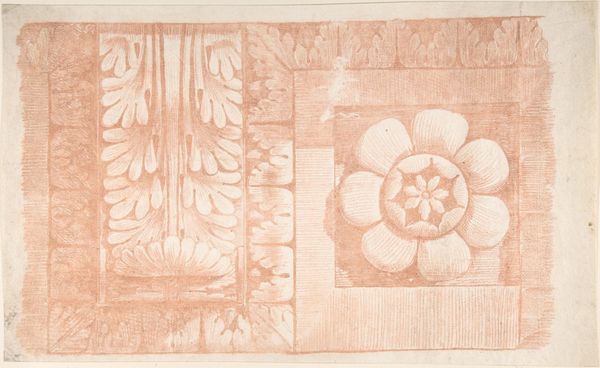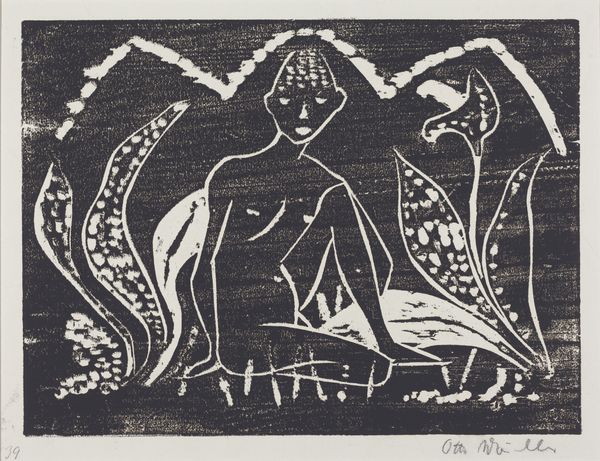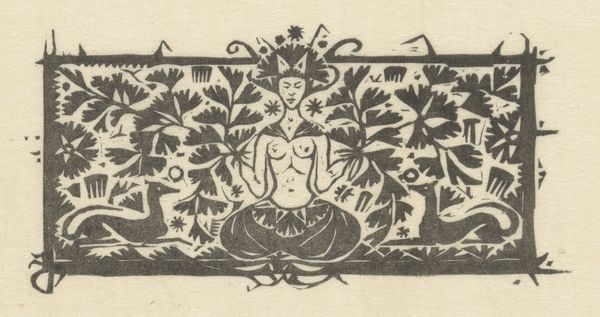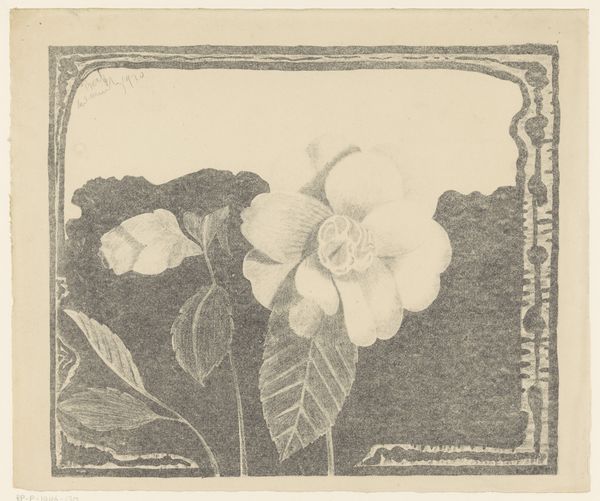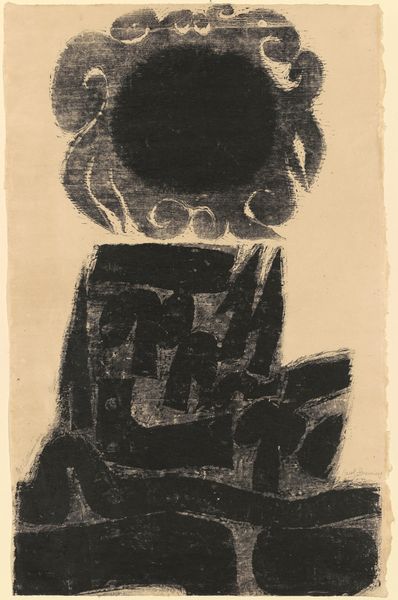
Camelia (zwart; rondom een doolhofachtig patroon) c. 1920
0:00
0:00
drawing, print, linocut, woodblock-print
#
drawing
#
art-nouveau
#
pen drawing
# print
#
linocut
#
woodcut effect
#
linocut print
#
woodblock-print
#
geometric
#
symbolism
Dimensions: height 185 mm, width 235 mm
Copyright: Rijks Museum: Open Domain
This camelia print was made by Samuel Jessurun de Mesquita, using a technique called woodcut. You can see the directness of the carving process in the print’s strong contrasts and textures. The artist has used different tools to create a range of marks, from the broad, flat planes of the flower itself, to the intricate maze-like pattern surrounding it, to the striations below the flower. This was a laborious process, as all the unprinted areas had to be painstakingly cut away. The character of the woodcut, and the manual effort required to make it, were appealing to artists in the early 20th century, who wanted to move away from the slickness of industrial production. De Mesquita seems to have embraced that ethos, combining the refinement of the camelia blossom with a roughened aesthetic. In the end, the print asks us to consider not only the image, but also the work that went into its making, collapsing the traditional divide between fine art and craft.
Comments
No comments
Be the first to comment and join the conversation on the ultimate creative platform.
